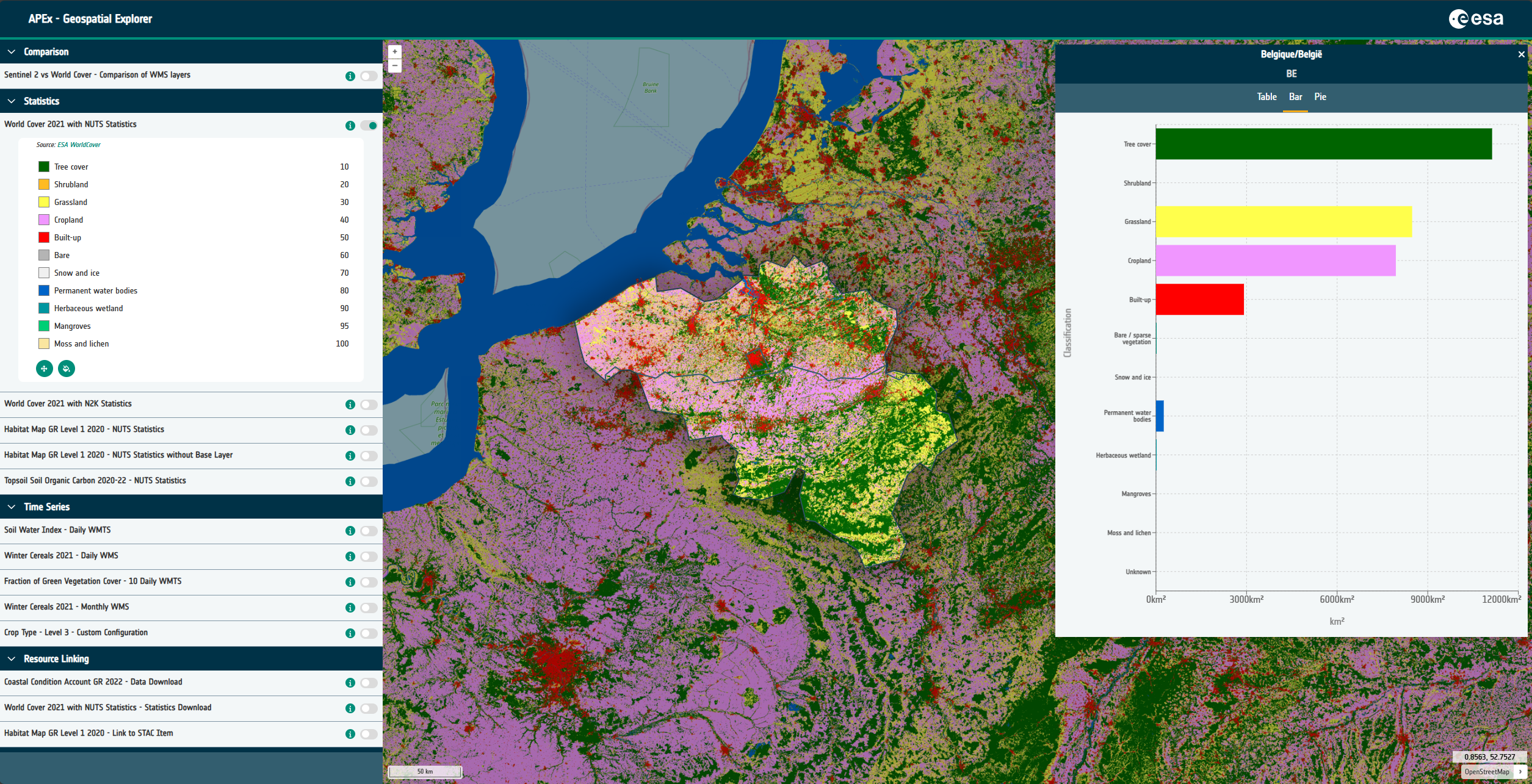Geospatial Explorer
Overview
The Geospatial Explorer provides an interactive web front end that can be used for the display and visualisation of geospatial and tabular data ingested from web services following common interoperable protocols (e.g. OGC Standards, STAC, etc.). The Explorer is data-driven, allowing administrators to define its configuration in JSON (i.e. the data layers and functional operations possible for each layer). This configuration determines how the user interface is rendered at run time and the resulting data and functionality that is exposed to the end user.

Typical functions will include the ability to visualise EO data, derived products and associated vector layers (e.g. administrative boundaries), with control over layer ordering, transparency, product comparisons (split screen) and support for features such as cursor inspection, queries, distance measurements and visualisation of tabular data via integrated charts and graphs. The UI will also provide access to metadata records associated with the data that is rendered in the Explorer.
Examples
Table 1 showcases example projects that use the APEx Geospatial Explorer:
| Project | URL |
|---|---|
| APEx (Demo) | https://explorer.demo.apex.esa.int/ |
| SEF - Food Systems | https://explorer.sef-food.apex.esa.int/ |
| SEF - Ecosystems & Biodiversity | https://explorer.sef-ecosystems.apex.esa.int/ |
User Guide
For a general overview of features, take a look at the Geospatial Explorer User Guide
Recommendations
To learn more about the specific recommendations for the usage and the configuration of the Geosplace Explorer, please refer to the our APEx Geospatial Explorer Recommendations page.
Example Configurations
Numerous example configurations can be found in the APEx Geospatial Explorer Configurations repository on GitHub.
Additional information will be shared on this page as the project progresses.

